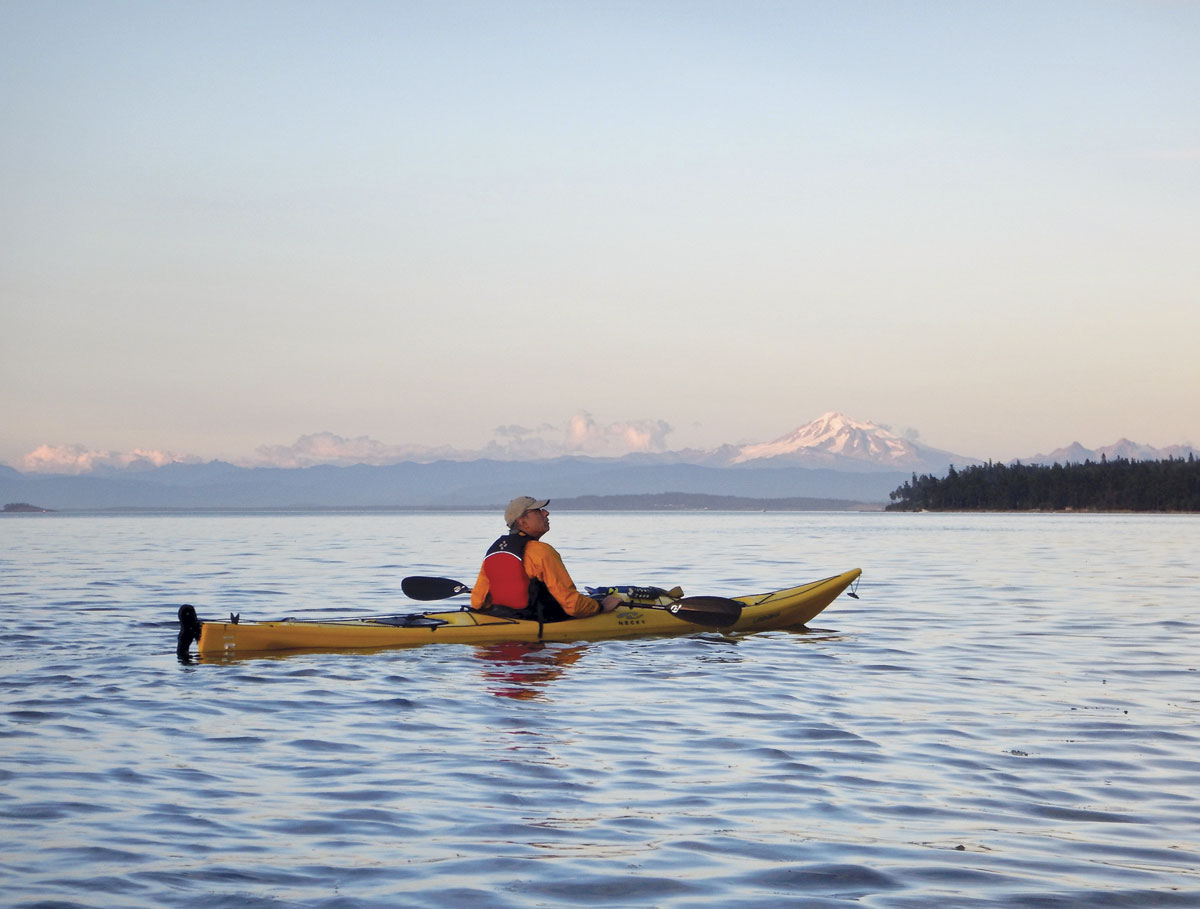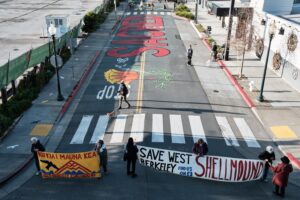et’s talk about volcanoes for a minute. I know this magazine is about nature in the Bay Area, and we don’t have any active volcanoes in our midst, not even dormant ones. (Round Top in the Oakland hills is a volcano, but it’s long dead, lying on its side, and covered by communications towers and eucalyptus trees.) And perhaps that’s a good thing; between earthquakes and wildfire and drought, we’ve got our hands full when it comes to potential natural disasters.
But I was on vacation in the Pacific Northwest this past summer and the great volcanoes of the Cascades—Shasta, Hood, St. Helens, Rainier, Baker—were oh so visible. I didn’t get particularly close to them. But I sure did notice them. And stare at them. And take lots of photos of them. I think it’s a question of scale. You come around a corner in Seattle, and bam! right there, staring down at you like God him/herself, is lordly Mount Rainier. I love admiring our iconic local peaks—Tamalpais, Diablo, Hamilton, St. Helena—from vantage points around the region. But their scale is entirely different, so the visceral impact is just not the same.
Am I jealous? Yes, a little bit. But as I’m reminded whenever I spend time in the natural world of other regions, each place has its own treasures and pleasures. And if you feel more at home in one versus the other, well, then listen to that voice and go there. That’s how and why I ended up here in the Bay Area 42 years ago and never left.
I was reminded of that “why” recently on a late afternoon bike ride up Railroad Grade on Mount Tam, at a point not too far below West Point Inn where you can look west, out to the Pacific (if the fog isn’t rolling in); and then south across the dark green hills of the Marin Headlands down to the Golden Gate, with San Bruno Mountain and Montara Mountain rising up behind the city, looking all golden itself in the light of the setting sun; and then southeast to the sparkling blue sheet of San Francisco Bay and over the East Bay hills to the double peaks of Mount Diablo. Yes! This is a fine home, even without volcanoes.
There are some who think Mount Diablo must be a volcano, rising as it does so prominently over the surrounding landscape. But it’s not; not even an extinct one. Yet as we explore in this issue, it does have the capacity to explode, if not in eruptions of lava then in sheets of flame.
The most recent wildfire on Mount Diablo was two years ago, in September 2013. Above I called wildfire a potential natural disaster, but it’s only a disaster when human lives or infrastructure are lost. In fact, wildfire is a kind of natural reset button for our Mediterranean landscapes. Fortunately, the 2013 Morgan Fire was one of those “perfect” fires that didn’t take any lives or homes. So as author Joan Hamilton describes in the ultimate article of her two-year-long coverage of the impacts of the Morgan Fire, this blaze cued a thrilling drama of a fast-changing landscape, complete with crazy wildflower displays, never-seen-here-before insects, and openings into previously hidden parts of the park. The mountain put on quite a show, and local researchers and nature-lovers had a ringside seat.
Now we’re delighted to share a small part of that show with you in this issue and spilling over onto our special Mount Diablo web page (baynature.org/diablo), which features time lapse slide shows, accounts of field trips with researchers, a habitat map of the fire zone, and an interactive version of the original chaparral illustration. Check it out! And then go check out the mountain itself, where the changes keep on coming, even if they’re not volcanic.





